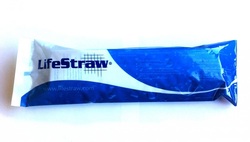Water
FIRST things FIRST! Consider beginning with an easy start: Water.
Store at LEAST 1 gallon (preferably 3 gallons) per person per day. One gallon would be for consumption the rest for cooking and sanitation).NOTE: You could die after THREE (3) days without water! Don’t forget to include water for your pets! Water storage can be completed in a ‘three-tier’ system:
FIRST thing you can do:
You'll feel like an instant prepper with this FREE start! For more water information go here: Water Storage: General Information A great source of basic water information can be found on the GetPandemicReady website. Although the info was written for pandemic preparation ... it's good for any disaster preparation! (disclosure: I am a co-founder of the GPR site). Here are the three pages that you will find helpful in understanding your water preparation needs: Water: Getting Started Finding and Filtering Water-Emergency Purification Starting your WATER preparations is an EASY-FREE start in getting your household prepared! There may be some expense in considering a way to filter & purify your water, if you use up your stored water. There are cheap options and there are more expensive options. That's something that you should read a bit more about and then decide on, as you get more involved in your home preparation activities. So ... start saving those containers and you're on your way to 'prepping' for an emergency! DISCLAIMER: This information is only supplied as references and a starting point only .. Suppliers or sites not to be considered as any type of recommendations from The Villages Tea Party... Members must do their own research.
|
Lifestraw
Lifestraw Personal Water Filter
Lifestraw, the most advanced portable water filter. Find more information on internet for where to purchase Lifestraws Purifying Water During an Emergency
The treatments described below work only to remove bacteria or viruses from water. If you suspect the water is unsafe because of chemicals, oils, poisonous substances, sewage or other contaminants, do not drink the water. Don't drink water that is dark colored, has an odor or contains solid materials. Storing water safely The best source of drinking water during an emergency is water you have stored with your emergency supplies.
If tap water is unavailable, the following may be considered as potential water sources. Water taken from these sources should be boiled before drinking.
Cloudy water should be filtered before boiling. Filter cloudy water using coffee filters, paper towels, cheesecloth or a cotton plug in a funnel.
Volume of Water to be Treated Bleach Solution to Add" 1 quart/1 liter 5 drops 1/2 gallon/2 quarts/2 liters 10 drops 1 gallon 1/4 teaspoon 5 gallons 1 teaspoon 10 gallons 2 teaspoons Caution: Bleach will not kill some disease-causing organisms commonly found in surface water. Bleach will not remove chemical pollutants. ___________________________________________ Better than Bleach: Use Calcium Hypochlorite to Disinfect Water http://www.survivaltopics.com/survival/better-than-bleach-use-calcium-hypochlorite-to-disinfect-water/ Old Way: Using Bleach to Disinfect Water I cringe to think how many people have expired bleach in their disaster emergency kits that will be used for treating polluted water. Those of us who have emergency preparedness stocks of survival food and survival gear often keep a gallon or two of unscented household bleach on hand for making safe drinking water in large quantities. Bleach is often the chemical of choice because it is commonly available and frequently mentioned when discussing the how-to’s of drinking water. Calcium hypochlorite - bleach Typical fresh household chlorine bleach has about 5.35% chlorine content (be sure to read the label). To use household bleach for disinfecting water:
Calcium hypochlorite is one of the best chemical disinfectants for water, better than household bleach by far. It destroys a variety of disease causing organisms including bacteria, yeast, fungus, spores, and viruses. Calcium Hypochlorite is widely available for use as swimming pool chlorine tablets or white powder that is much more stable than chlorine. This is often known as “pool shock”. How to Disinfect Water Using Calcium HypochloriteUsing granular calcium hypochlorite to disinfect water is a two step process.
Another plus for using calcium hypochlorite to disinfect water for emergency use is that a little goes a very long way. A 1-pound pag of calcium hypochlorite in granular form typically costs only a few $US dollars and can be obtained in any swimming pool supply section of your hardware store or online. This amount will treat up to 10,000 gallons of drinking water, which is enough for a family of four for some six or seven years at a gallon per day per person! Calcium hypochlorite will store for a long period of time and remain effective as a chemical drinking water treatment. So get rid of the household bleach and buy a can of Calcium hypochlorite for your disaster emergency water disinfection needs. It lasts far longer and treats far more water than the traditional chlorine bleach water disinfection treatment. More Survival Topics on Page 21 |